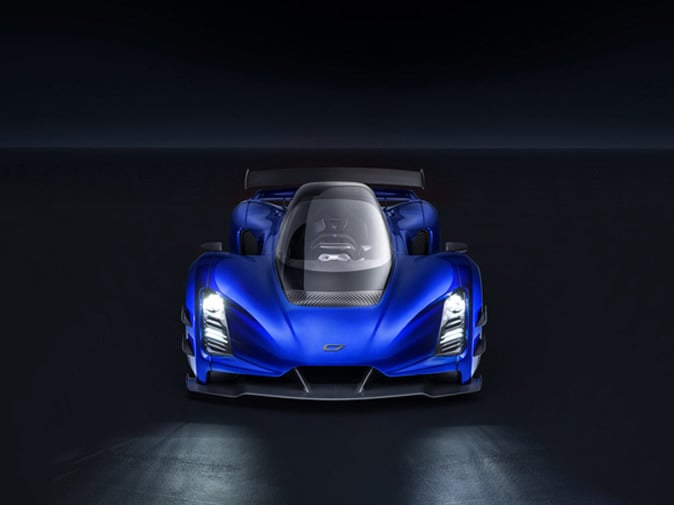Fuel Efficiency and the new Czinger Hypercar

Why the future is not Battery Electric
There was a news story recently which had the Tesla fan boys jumping up and down. The article was referring to the “ humiliation” of the McLaren F1 by a heavily modified Tesla, over just one lap of a very short circuit. With all the current column inches being given to electric vehicles, it's easy to see how some think that they are superior to a fuel car. Granted, not having tailpipe emissions may well be a benefit, but Ethanol, Methanol and LPG all burn much more cleanly than any current fuel in use. And of of course there is the impact of the power station used to generate the electricity, to charge the electric vehicle. If your electric car is powered by Coal, it's very far from being environmentally friendly.
Even if the power is wind generated, what isn't being factored in is the colossal carbon output from building a wind generator, particularly due to the foundations in concrete. So much so, that payback takes many years, and in certain conditions may not have been effective at all.
Back to the McLaren and Tesla for a moment, I ran some numbers, and calculated that if the Tesla was to try and complete the same distance that the McLaren had at the 1995 24 hrs of Le Mans, it would have taken 21 hours longer to do the same distance. Who's humiliated now? This is why we won't be seeing Electric passenger planes, Electric Super Tankers or Electric Endurance Cars any time soon (well not until they solve portable fusion reactors)
Storing energy in batteries is not an effective method for future transportation, certainly at the current stage of development. Furthermore, the dust to dust impact of an electric vehicle ( which takes into account the overheads of primary tertiary and secondary manufacture, combined with the lifetime emissions and finally the recycling overhead) is not much different to a current fuel car.
Kevin Czinger founder of the Czinger Car Company previously was on a mission to develop electric cars, as he, like many others believed that it was good for the planet. In the end though after investing heavily in the technology and production realised it wasn't the answer. Now his new Hypercar the 21C, showcases technology that could filter down into mainstream car production. The 21C is 3D printed and has a fighter plane style, 1+1 seating layout, this reduces the frontal area and improves aerodynamics. It is allied with immense performance.
The Czinger is a hybrid car with a tantalising specification, , but at its core are design features that could make future cars truly efficient, and might actually help the car industry deliver a sustainable solution. Right now though, they are doing completely the opposite and making 2 ½ ton electric SUVs, which have a hugely negative environmental impact.
Imagine for a minute taking the Czinger specification (1250 hp @10500 rpm, 1183 kg, 0-62mpg 1.9 sec) and making it into a smaller, lighter, lower powered version.
According to a web search, the MPG equivalent of a Tesla is approx 93 mpg. Not many modern cars can get close to that – but they could do... if manufacturers put their resources into streamlined and lightweight cars, and governments legislated against ghastly SUVs, we could see cars reaching 300mpg plus. After all, a 1958 FIAT 600 achieved 293.45 MPG in 1969...
What would impress me would be something around 600 kg, that seats 2 or 3, with a multi-fuel engine ( Petrol, LPG, Ethanol, Methanol, Biogas) together with a Capacitor or Flywheel based energy recovery system, and long term solar top up. Make it super slippery and I don't see why we can't have a set of performance statistics that really rewrite the rule book. What about 200 mph and 200 mpg..try that in a Tesla.










